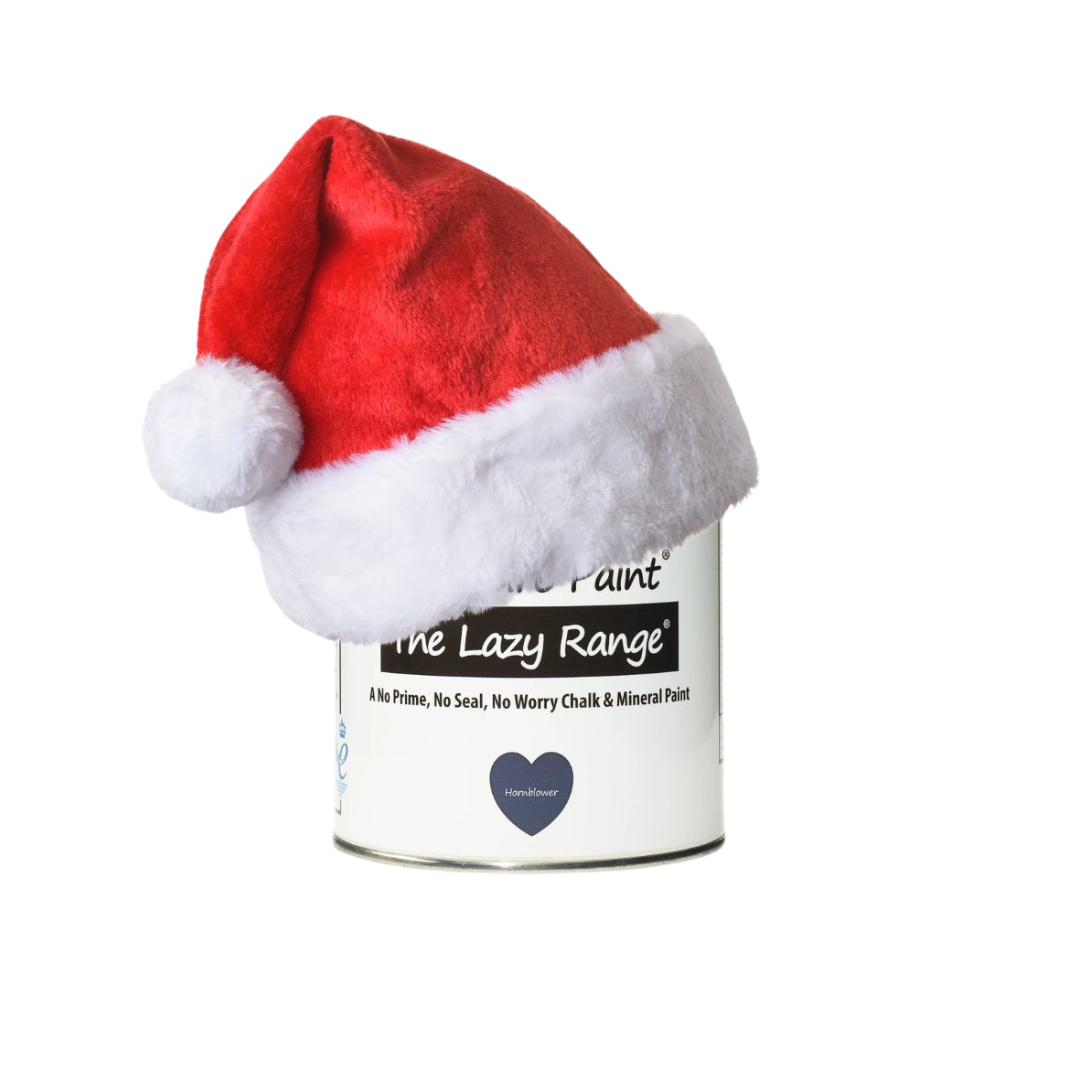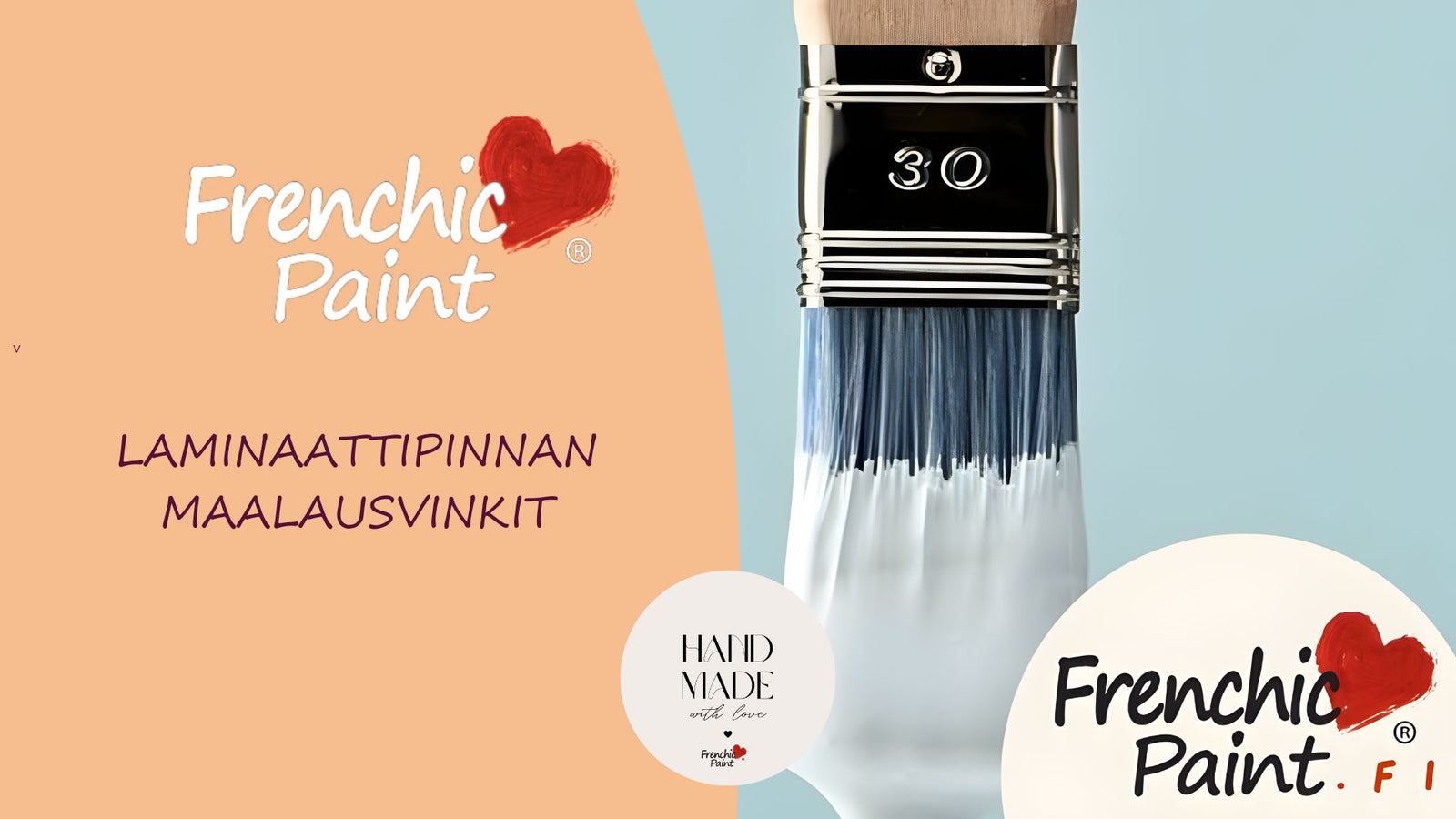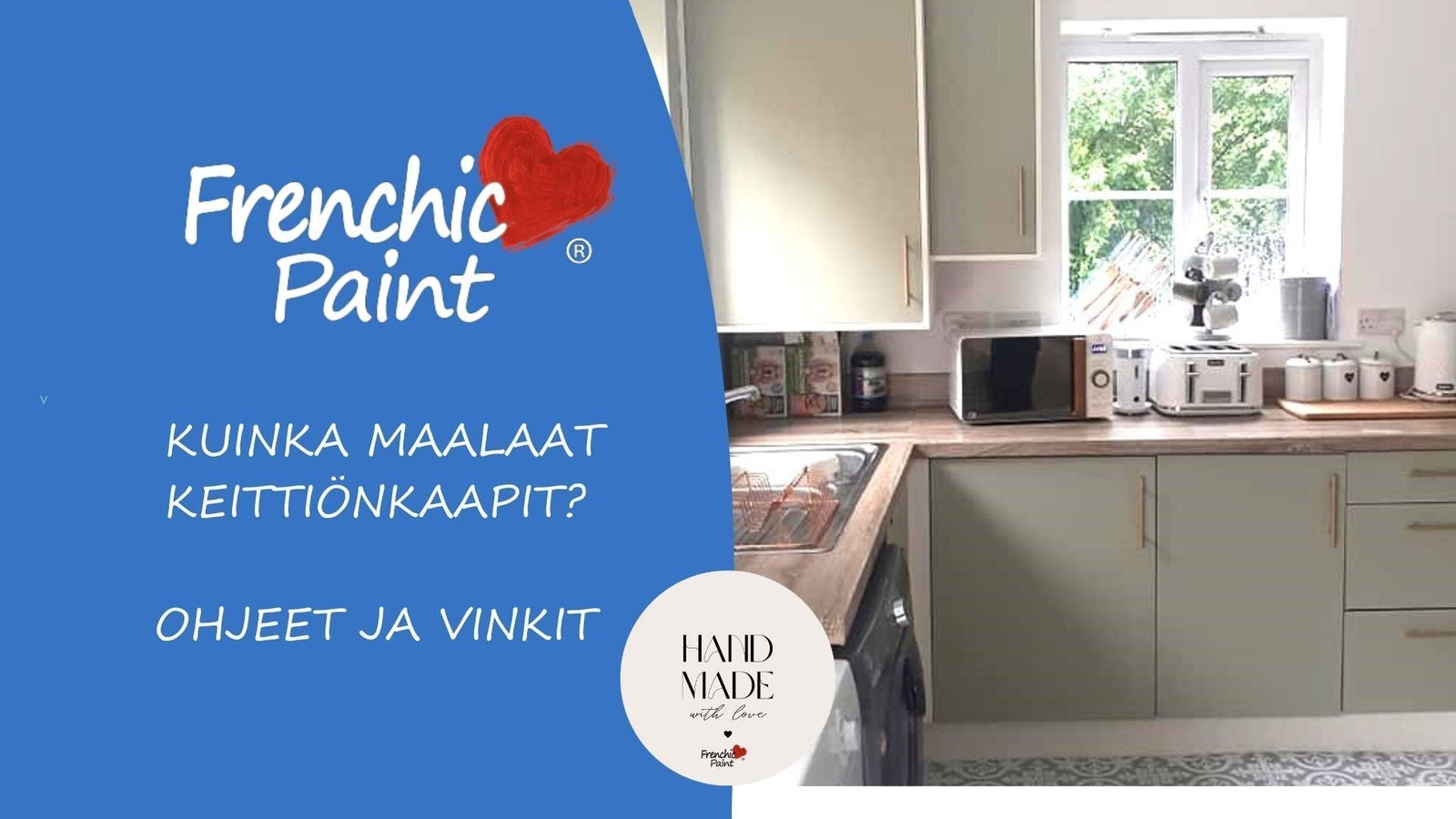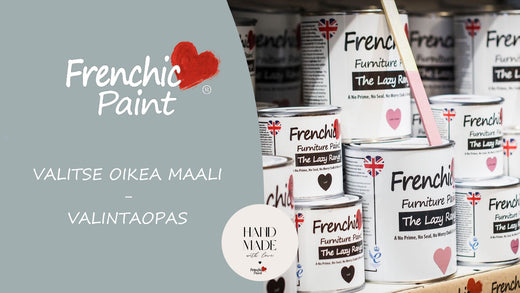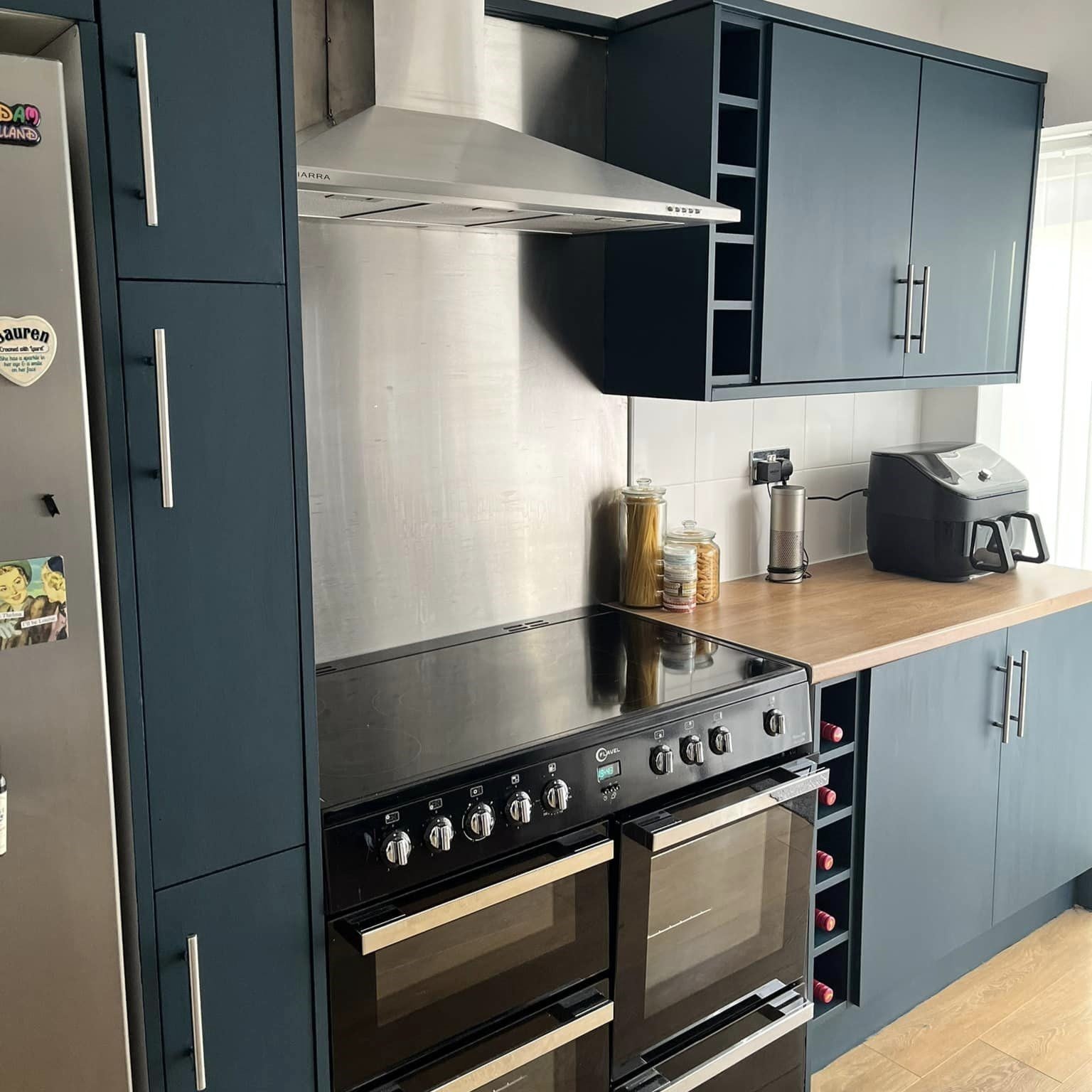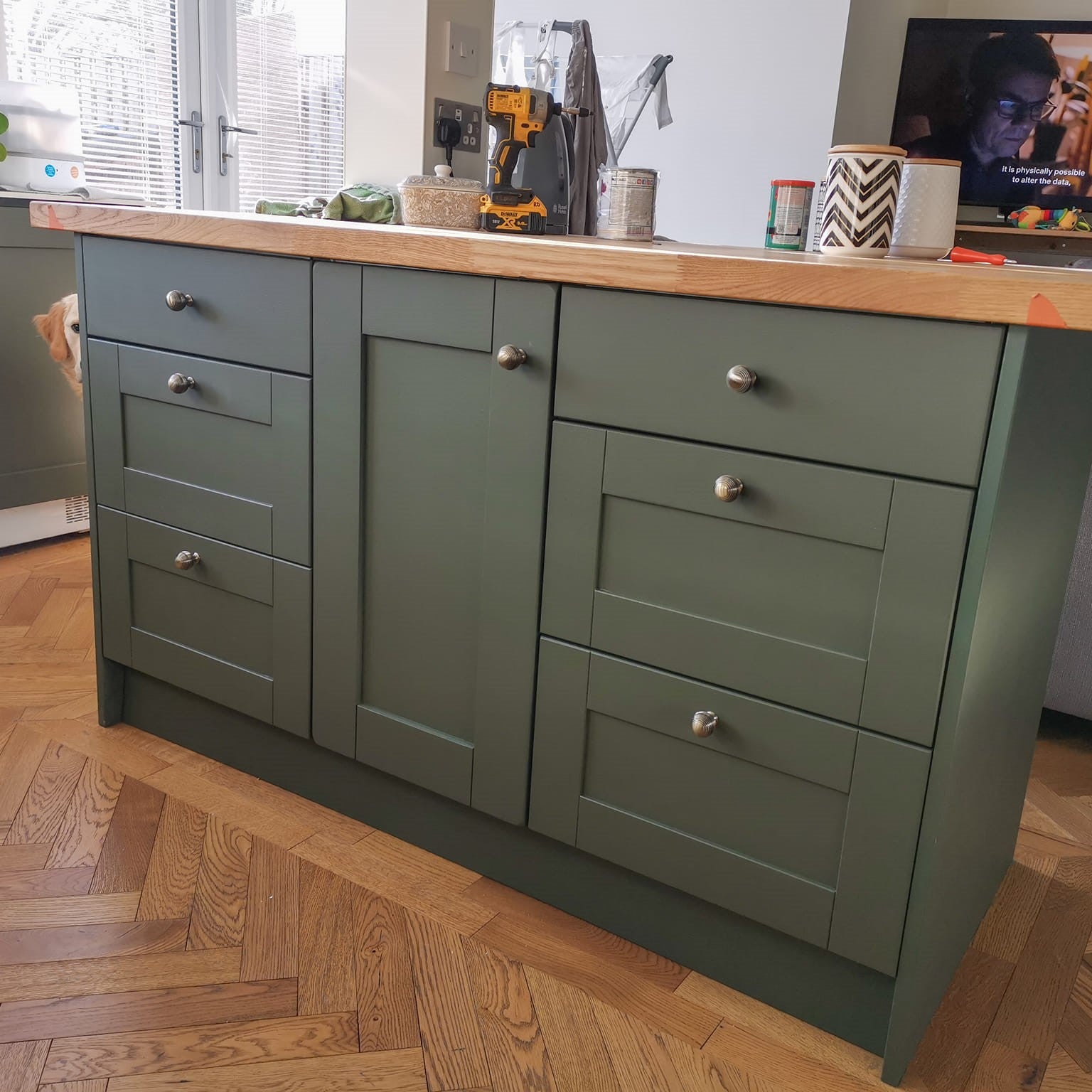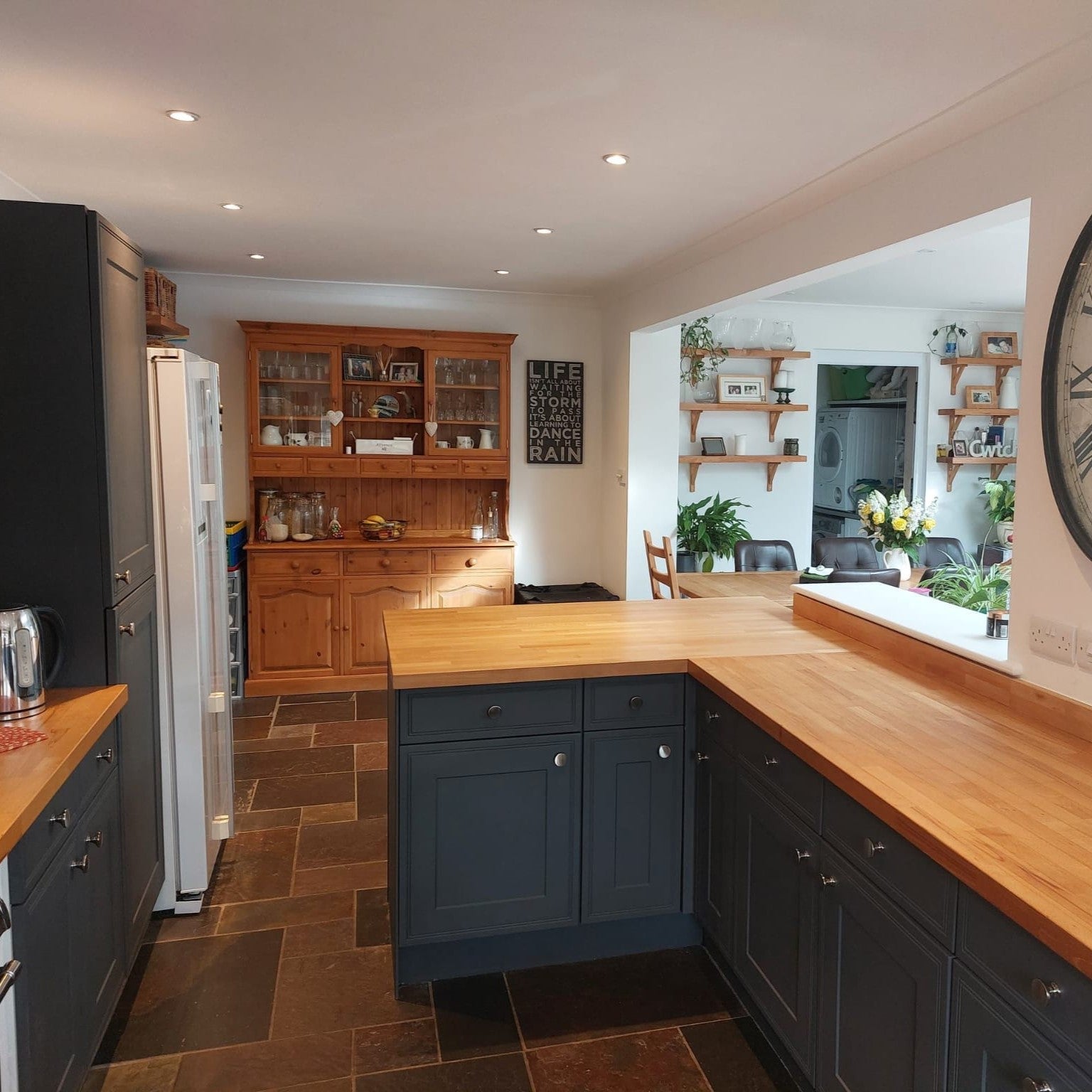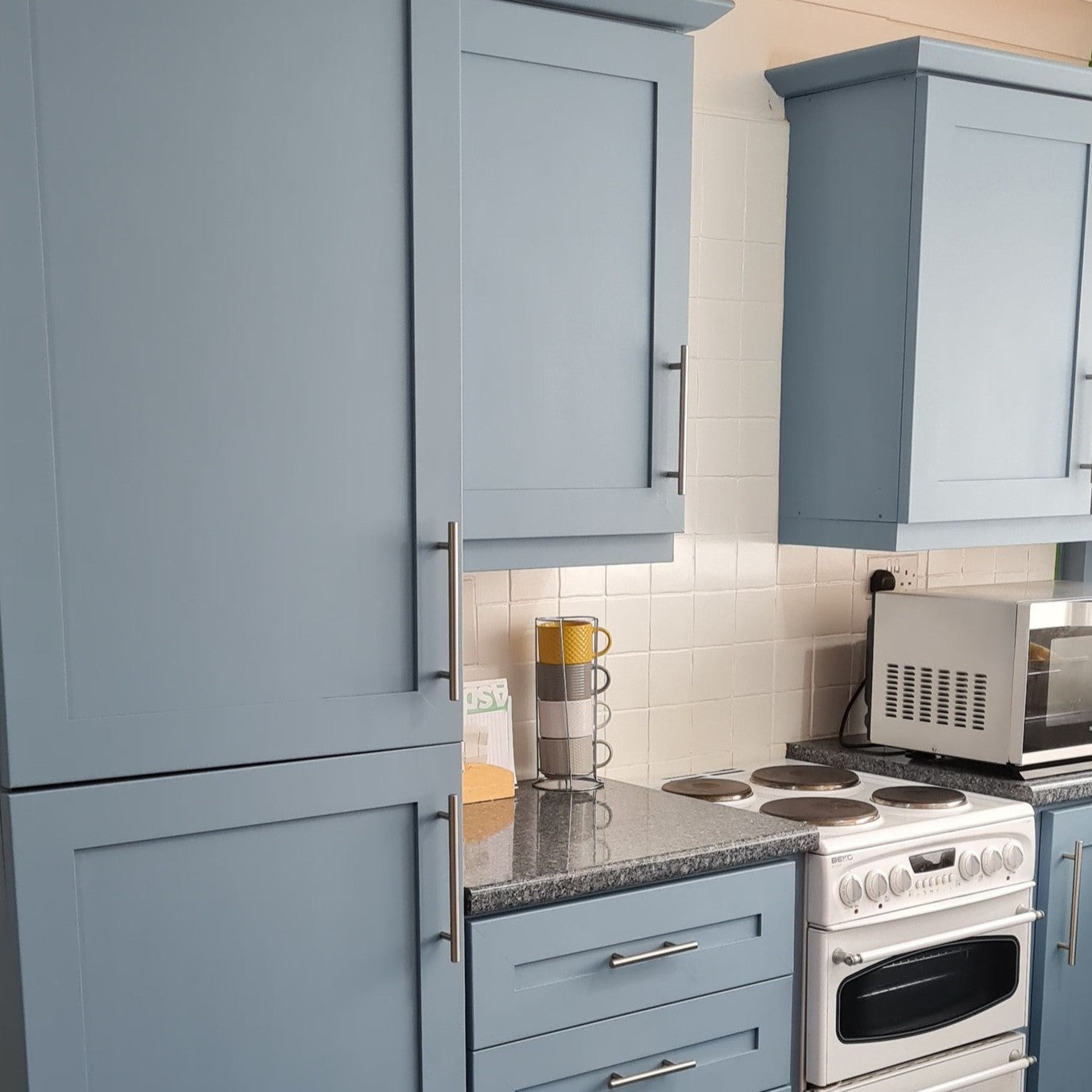LAMINATE PAINTING TIPS:
How to paint glossy and smooth laminate furniture?
From kitchen cabinets to custom wardrobes, there are so many pieces of furniture that feature a smooth veneer or glossy laminate surface. This is simply because laminate offers lightness and good durability at an affordable price.
But what if you want to renovate or just change the color of these furnishings?
That's where painting laminate furniture comes into play. So is it a practical option - or even possible?
Read how we answer this question and explain how painting laminate furniture produces the best possible result.
Can laminate furniture be painted?
When it comes to upcycling or simply converting furniture, some people think that success is only possible with wooden furniture.
In a way, it's easy to understand why. Glossy or very smooth surfaces don't give paint good adhesion, so solid wood furniture seems like a better option.
In fact, painting glossy furniture is completely possible - and it's not even particularly difficult with just a few tips and advice!
Painting is all about proper preparation and choosing the right products.
Choose a paint with good adhesion, one that is designed for use on glossy laminate surfaces.
This eliminates the need for special primers, which reduces both costs and time.
Frenchic's Al Fresco range , Lazy Range and Trim Paint ranges are ideal solutions. Our wall paint is also suitable for painting laminate surfaces. You can check the suitability of your project and paint range here.
You don't need toxic primers or special base coats, so the Frenchic series is the right choice for painting IKEA-style furniture or laminate-surfaced kitchen cabinets.
The use of such a 'Self Priming' paint means that glossy laminate surfaces can be painted in the same way as other surfaces.
Provided, of course, that you prepare them thoroughly in advance, which brings us to the next topic...
How are laminate surfaces painted?
The process of painting laminate surfaces is no different from painting any other piece of furniture - it all depends on the preliminary preparation.
The video and guide on surface preparation provides detailed step-by-step instructions, but these are the three main important steps....
Clean and dry
Whether you're painting high-gloss kitchen cabinets or a laminate nightstand, the first step is to make sure the surface is very clean by using a good degreasing detergent like Sugar Soap .
Mix one part detergent with ten parts warm water, apply generously with a cloth or sponge and then wipe or scrub vigorously from the bottom up to avoid dripping. Finally, rinse off any detergent residue with fresh water. Finally, let the surfaces dry completely.
Roughen
Next comes sanding. This step is vital as it removes the glossy finish and creates a roughened and dull surface that maximizes paint adhesion. It is worth noting that the glossier the surface, the more thorough the sanding required.
You don't need to use a power sander - a thorough hand sanding is usually sufficient, so a sanding sponge or paper is a good alternative. Roughen the entire surface thoroughly with medium to fine sandpaper or a sanding sponge, then wipe away the sanding dust.
Paint at least twice
Only paint a clean and dry surface with carefully mixed paint. Follow the drying times for each coat, check them on the side of the paint can before starting.
Painting and paint curing
For the actual painting, you can use a brush , roller or sprayer, depending on your preference and the type of furniture you are painting. Rollers are quick to use for larger, flat surfaces, and spray painting is for larger projects. However, the paint will need to be diluted with water by about 5-10% if you are using a sprayer, which may mean additional coats are needed.
The usual advice applies to painting, such as taping edges, using long, even brush strokes, and using the right amount of paint to avoid uneven paint. For more detailed instructions on painting furniture, see our guide.
Another thing to remember is the curing time of the paint
All paints take some time to fully cure. Water-based Frenchic paints reach full surface hardness in three weeks, provided the painting is done according to the instructions.
So, handle the newly painted surface carefully for the first few weeks, while the curing process is underway and the paint is still soft and fresh.
You will notice a huge difference in durability when you let the paint dry according to the instructions.
How to paint laminate furniture without sanding?
When it comes to laminate furniture, one of the most common questions is whether the shiny, slippery, and smooth surface can be painted without sanding.
Simply put, people want to skip some of the pre-treatment but still get the same, gorgeous, long-lasting end result.
We'll keep it short and sweet - if you neglect preparation, prepare to fail.
Sanding is so important when painting laminate furniture because the roughened surface improves grip, which means better adhesion and greater durability.
If you skip mixing the paint (shaking the paint can is not enough to lift the pigment from the bottom), you will definitely end up painting too many coats. So mix the paint with a wide mixing spatula or similar, carefully lifting the pigment from the bottom to the top. Thorough mixing takes a while, but it is also key to evenly distributing the beneficial preservatives. So mix for a while longer.
If you skip sanding or washing, things may look good right after painting, but you risk the paint scratching, chipping, and not lasting long.
What kind of laminate furniture can I paint?
When you know how to paint laminate furniture, a wide range of possibilities open up for your home.
Laminate furniture has grown in popularity over the past couple of decades, and most people have at least one piece of furniture in their home - if not more.
Popular items include built-in wardrobes, sliding door cabinets, chests of drawers, bookshelves, kitchen cabinet doors, shelves, TV stands and desks.
Tip!
Another advantage of painting furniture is that you can match different pieces of furniture together, regardless of their original color.
It could be, for example, a coffee table and a TV stand that have been moved together from different rooms.
Or you can even attach units together, one on top of the other, or in a row.
Even if the furniture is initially mismatched, the situation changes when it is combined into one large unit using the same paint shade: you can build stunning and unique ensembles.
Add moldings to the surface of the laminate furniture in a French style frame or in a modern style with semi-circular moldings - paint the whole thing and you have a wonderful designer piece of furniture, without the price tag of designer furniture!
The great news is that all of your old furniture can benefit from painting, you can easily change its style - match it with a consistent color and give it a new life.
Check out what others have painted on our social media channels or in our Facebook group - you'll be surprised!
The Ikea shelving unit in the picture is painted in the Last Dance shade, from the Trim Paint series.

